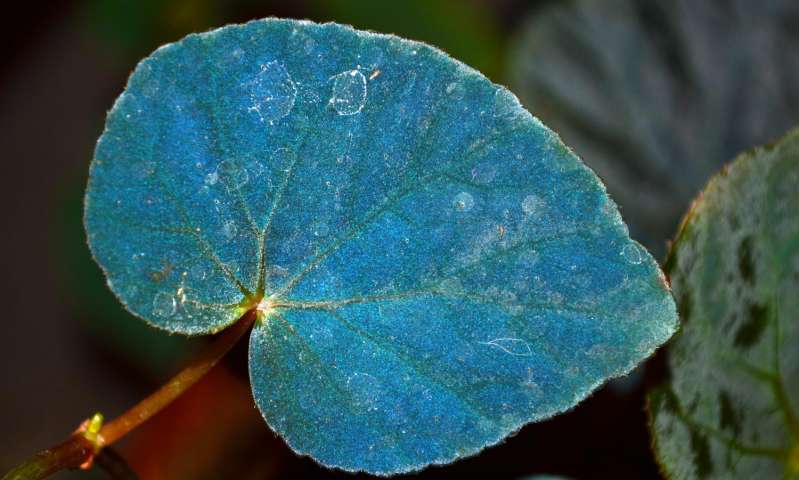
British researchers discovered that some Begonias — common household plants that need very little sunshine — have blue leaves because they evolved a special kind of chloroplast. It seems selective evolution led the plants to engineer a nanoscale light-trapping structure, the likes we’ve only seen in miniature lasers and other photonic structures made by humans that control the flow of light.
A light scavenger
Many plant lovers prize begonias because they can easily grow them indoors. They have this ability because begonias grow on the floor of lush tropical forests with little direct contact to sunlight. They’re basically getting the leftovers. But the plants learned to get by on what they got.
Some begonias have blue leaves, yet their biological function remained a mystery until Dr. Heather Whitney at the University of Bristol’s School of Biological Sciences started studying them. She noticed that the begonias grew blue sheen leaves only when these were kept in almost total darkness. When exposed to light, the blue sheen almost totally disappeared. Upon investigating further with colleagues, they came across something striking.
“We discovered under the microscope, individual chloroplasts in these leaves reflected blue light brightly, almost like a mirror. Looking in more detail by using a technique known as electron microscopy, we found a striking difference between the ‘blue’ chloroplasts found in the begonias, also known as ‘iridoplasts’ due to their brilliant blue iridescent colouration, and those found in other plants. The inner structure had arranged itself into extremely uniform layers just a few 100 nanometres in thickness, or a 1,000th the width of human hair,” said Matt Jacobs, PhD student in the School of Biological Sciences.
These biological nanotech structures resembled artificial optical structures used in research and high-grade instruments. After performing the same measurements scientists use to rate their artificial counterparts, the researchers were able to study these iridoplasts more closely.
Eventually, the team found that while the iridoplast structures reflect all the blue light, they actually absorb a lot more green light. If you know your plant biology, that shouldn’t be too surprising given upper canopy trees in the tropics are known to absorb blue light, leaving only the filtered green wavelengths of light for the begonias on the ground.
Next, the photosynthesis performance of iridoplasts was put to the test by comparing them to normal chloroplasts. The British researchers found the iridoplasts performed better in very low light conditions, as reported in the journal Nature Plants.
It remains to be seen whether other plants have these photonic chloroplasts, but already the researchers have ideas how their findings could be used to improve crop yields or design new electronic devices.






